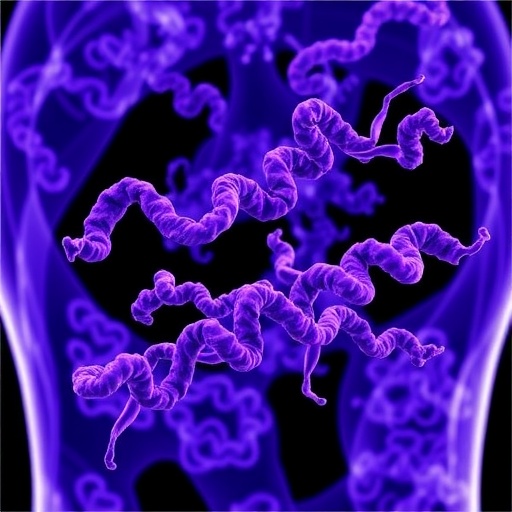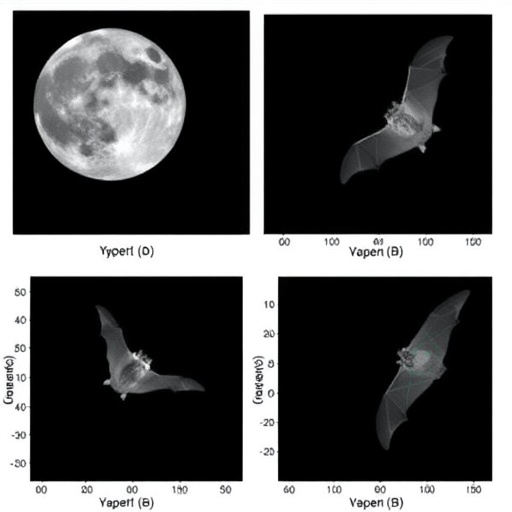
Recent advancements in cancer research have unveiled a plethora of potential biomarkers that can enhance the diagnosis and prognosis of various malignancies. Among the most promising discoveries in the field is hsa_circ_0000419, particularly in relation to esophageal squamous cell carcinoma (ESCC). As this particular form of cancer continues to pose a significant health challenge globally, researchers are delving deeper into understanding the clinical implications of circRNAs, with hsa_circ_0000419 standing out for its remarkable potential.
The study led by Dong et al. provides a comprehensive analysis of hsa_circ_0000419, delineating its significance in clinical settings. In a world where early detection is critical for improving patient outcomes, the emergence of this circular RNA as a diagnostic and prognostic marker invites considerable interest. The research team meticulously examined a variety of case studies, patient samples, and molecular assays to ascertain the role of hsa_circ_0000419 in the pathogenesis of ESCC.
At the molecular level, hsa_circ_0000419 is a circular RNA that originates from back-splicing events of pre-mRNAs. This unique structure differentiates it from traditional linear RNAs, raising questions about its functionality within cancer biology. Recent evidence has begun to suggest that circRNAs may play instrumental roles in regulating gene expression, modulating various cellular processes. Understanding how hsa_circ_0000419 fits into this framework is crucial, as it could illuminate new pathways for therapeutic intervention in ESCC.
The study meticulously combined clinical data with advanced molecular techniques to reveal that hsa_circ_0000419 levels were significantly altered in ESCC tissues compared to normal esophageal tissues. This indicates that hsa_circ_0000419 harbors the potential to act as a biomarker for distinguishing malignant from benign tissues. By identifying these molecular differences, healthcare practitioners could establish more effective diagnostic criteria for ESCC, ultimately leading to earlier and more accurate detection of the disease.
In the context of ESCC prognosis, the findings suggest that elevated levels of hsa_circ_0000419 may correlate with poor patient outcomes. This revelation highlights the importance of monitoring hsa_circ_0000419 levels in patients post-diagnosis, as it could serve as a predictive tool for disease progression and survival rates. Such insights are vital for clinicians aiming to tailor treatment plans based on individual patient profiles and needs.
The authors of the study also explored the mechanistic insights into how hsa_circ_0000419 may influence tumor behavior. It was postulated that hsa_circ_0000419 could act as a sponge for microRNAs, thereby regulating the expression of target genes involved in cell proliferation, migration, and apoptosis. This presents a paradigm shift in understanding cancer biology, where circular RNAs like hsa_circ_0000419 are no longer viewed as mere byproducts of gene expression but rather as key players in oncogenesis.
Furthermore, the implications of hsa_circ_0000419 extend beyond mere diagnostic and prognostic markers; they may also provide avenues for therapeutic interventions. If ongoing research confirms the role of hsa_circ_0000419 in promoting aggressive cancer phenotypes, targeting this circular RNA could lead to the development of innovative therapeutic strategies. This possibility opens a new frontier in cancer therapy, emphasizing the need for further investigation into circRNA-targeted treatments.
In addition to its clinical significance, the research underscores the need for broader exploration into the circRNA landscape. The burgeoning field of circular RNA research presents opportunities to discover new biomarkers across various cancers beyond ESCC. As more studies illuminate the diverse roles of circRNAs, researchers may identify additional targets that could revolutionize cancer diagnostics and therapeutics timetables.
In conclusion, the study by Dong et al. marks a significant step forward in the quest for enhancing the early detection and effective management of esophageal squamous cell carcinoma. The revelations surrounding hsa_circ_0000419 not only pave the way for innovative diagnostic methodologies but also accelerate the pace of research into circular RNAs as functional entities in cancer biology. As the scientific community continues to unravel the complexities of ESCC, the potential for hsa_circ_0000419 as a clinical tool remains an exciting prospect that warrants further exploration and validation.
By increasing awareness of the vital contributions of circular RNAs such as hsa_circ_0000419, researchers and clinicians can harness this knowledge to improve patient outcomes in esophageal cancers. The intricate relationship between hsa_circ_0000419 and tumor biology emphasizes the importance of continuous research in the cancer domain, ensuring that all angles are explored in the battle against this formidable disease.
Emerging from these findings is the optimistic notion that advancements in understanding certain molecular markers can lead to meaningful progress in cancer-related healthcare. In an era where precision medicine is becoming increasingly prominent, findings like those from Dong et al. serve as a cornerstone for future investigative efforts to refine and customize treatments for patients grappling with esophageal squamous cell carcinoma.
As this research garners attention, it encourages collaborations between molecular biologists, oncologists, and clinical researchers, fostering a multidisciplinary approach to combating ESCC. Such partnerships are critical for transforming theoretical discoveries into practical applications that can ultimately shape the future of cancer care.
Furthermore, societies worldwide must support funding initiatives to propel research into novel biomarkers like hsa_circ_0000419. By allocating resources and investing in innovative studies, we can build a robust pipeline of research that could lead to paradigm shifts in cancer diagnostics, treatment methodologies, and, ultimately, patient survival.
In summary, the clinical value of hsa_circ_0000419 as an emerging marker for esophageal squamous cell carcinoma is a promising development in cancer research. The convergence of scientific inquiry and clinical application stands to benefit patients through enhanced diagnosis and prognosis capabilities. The journey toward unfurling the complexities of circRNAs promises an exciting future in esophageal cancer management and beyond.
Subject of Research: hsa_circ_0000419 in Esophageal Squamous Cell Carcinoma
Article Title: The Clinical Value of hsa_circ_0000419 in Diagnosis and Prognosis of Esophageal Squamous Cell Carcinoma
Article References: Dong, Y., Meng, H., Chen, Y. et al. The Clinical Value of hsa_circ_0000419 in Diagnosis and Prognosis of Esophageal Squamous Cell Carcinoma. Biochem Genet (2025). https://doi.org/10.1007/s10528-025-11194-0
Image Credits: AI Generated
DOI: 10.1007/s10528-025-11194-0
Keywords: hsa_circ_0000419, esophageal squamous cell carcinoma, circular RNA, biomarkers, diagnosis, prognosis, cancer research
Tags: back-splicing events in RNA biologycancer diagnosis and prognosiscancer research advancementscircular RNAs in cancerclinical implications of hsa_circ_0000419early detection of esophageal canceresophageal cancer biomarkersesophageal squamous cell carcinoma researchhsa_circ_0000419molecular mechanisms of circRNAspatient outcomes in cancerrole of circRNAs in gene expression




